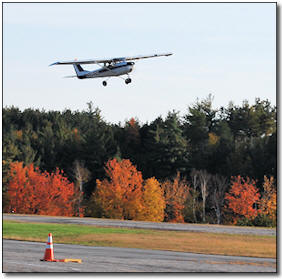Subscriber question:
"Can you please explain cross-control stalls? They don't even demonstrate them in civilian pilot training." - Anonymous
Wally:
“Cross-control stalls…you are correct, the only group of pilots who are tested on cross-control stalls are CFI’s. Sort of remarkable since this is the stall that often causes the low altitude stall spin accident. A cross-control stall is a stall while in a skidding turn, that is a turn with excessive bottom rudder. By bottom rudder, I mean if we are turning right, the bottom rudder is the right rudder.
 In this situation, the low wing – which is effectively being slowed down with the excessive bottom rudder, will stall before the top wing – which is being accelerated by the excessive bottom rudder. When this happens, the aircraft rotates to the right and the nose drops.
In this situation, the low wing – which is effectively being slowed down with the excessive bottom rudder, will stall before the top wing – which is being accelerated by the excessive bottom rudder. When this happens, the aircraft rotates to the right and the nose drops.
The natural pilot reaction is to pull back on the yoke and apply left aileron, both of which are incorrect. If the pilot actually does this, the aircraft will continue to rotate and it will enter deeper into the stall. The proper reaction is to apply forward elevator and opposite rudder. Of course the real solution is to not make a cross-control stall.
Now, you can perform a cross-control stall from a slipping turn as well but this is not as dangerous. When we stall while in a slipping turn, that is with excessive top rudder, the top wing stalls first and effectively levels the wings. This presents a much more normal picture to the pilot and almost acts as an automatic recovery.
The Airplane Flying Handbook describes the cross-control stall as a stall from a skidding turn, because it requires proper technique to recover and if not performed correctly can result in a spin.
I agree such experience is beneficial for all pilots and encourage you to find an experienced instructor and learn the difference between a stall from a skidding turn and one from a slipping turn. Then you will understand why it is not dangerous to slip to landing.”

